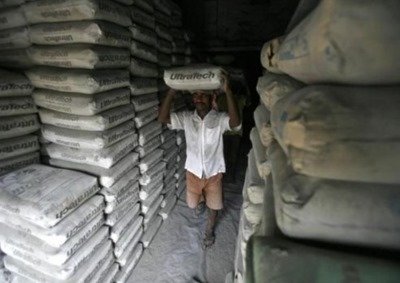Concrete Vs Cement | Workability of Concrete | Workability of Concrete
Concrete Vs Cement | Workability of Concrete | Workability of Concrete
What is Cement?
Cement is a binding element that can be used to stick and connect various building materials. Portland cement and Asphalt cement are the common types of cement used in the construction industry. Portland cement is the essential ingredient element in the concrete mix. It can be in either a dry powdery type before water is added or the paste (mortar) that hardens and binds the surface of the bricks.
Portland cement is made of some primary substances which sand or clay-limestone bauxite, and iron ore. It may also include shells, marl, chalk shale, slate and slag. These different ingredients are mixed and heated in cement processing plants to form clinker, a rock-hard substance. The clinker is then ground down to the powder that can be combined with water to form a paste.
How Cement is Made
What is Concrete?
Concrete is a durable construction material that uses cement as one of its ingredients. Concrete has four primary components, namely: Stone, cement, sand, and water. For concrete strength, the less water that is added to a concrete mixture, the stronger that mixture will be.
In concrete, water is used to activates the cement, which acts as the binding component. The cement bounds together coarse and Fine Aggregates in the mix. Mixtures that use larger aggregates tend to be stronger than those with finer aggregates.
The key to achieving strength and durability of concrete rests in the careful mixing and proportioning of the ingredients. A concrete mixture that does insufficient paste to fill all the voids between the fine or coarse aggregates will be difficult to place and will give rough, honeycombed surfaces and porous concrete.
A concrete mixture with an excess of cement paste will be easy to place and will produce a smooth surface, but will result in concrete that will be more likely to crack and be uneconomical.
A perfect proportioned concrete mixture will give the desired workability for the fresh concrete mix and the required durability and strength for the hardened concrete.
Water Cement Ratio
The water-cement ratio is the weight or mass of the mixing water divided by the weight of the cement. High-quality concrete is produced by lowering the water-cement ratio as much as possible without sacrificing the workability of fresh concrete mix. Generally, using less water makes a higher quality concrete provided the concrete is placed correctly, consolidated and cured.
Usually, a concrete mixture is by volume about 10 to 15 % cement, 60 to 75 per cent coarse/fine aggregates and 15- 20 % water. Entrained/trapped air bubbles in many concrete mixtures may also take up another 5 to 8 per cent.
Workability of Concrete
Workability of concrete is that quality that allows the concrete mix to be placed with minimal effort and may also include considerations for whether the concrete will be pumped into place.
Strength is a particularly crucial consideration for structural concrete, and durability determines how long the concrete will last. Density can contribute to strength and durability, and appearance is vital in decorative concrete applications.
Concrete Vs Cement
Although the two terms concrete and cement are often are used interchangeably, cement is actually one of the ingredients of concrete. Concrete is a mixture of aggregates and cement. The aggregates are sand and gravel or crushed stone; the paste is water and Portland Cement.
The cement composition is from 10 -15 per cent of the concrete mix, by volume. Via a process called hydration, the water and cement harden and bind the aggregates into a rocklike concrete mass block. This hardening process continues for many years meaning that concrete gets stronger as it gets older.
Portland cement is not a brand name, but the generic name for the type of cement used in almost all concrete, just like stainless is a type of steel and sterling a type of silver.
Concrete Vs Cement Compared
Cement is manufactured from calcium and silica-rich materials; concrete is made from cement and aggregate.
Cement is a unique adhesive agent make it an excellent binding component, but on its own, cement is prone to cracking.
Concrete has cemented in it
When the cement is mixed with water, it creates a paste. And when that paste is combined with coarse or fine aggregates like gravel and sand, the result is what we know and love as concrete.
Concrete is more durable than cement.
Concrete can last 100s of years, but cement is much less durable. Concrete is actually much better than cement in durability.
Concrete works are used larger projects, but cement is more often used in the smaller task.
Concrete is the strongest and longest-lasting materials known and used to build roads, schools, walkways, bridges, buildings, sidewalks, and many other structures. Cement, on the other hand, is primarily used in smaller jobs, e.g. grouting and specialized masonry, repairs etc.
Concrete Vs Cement

